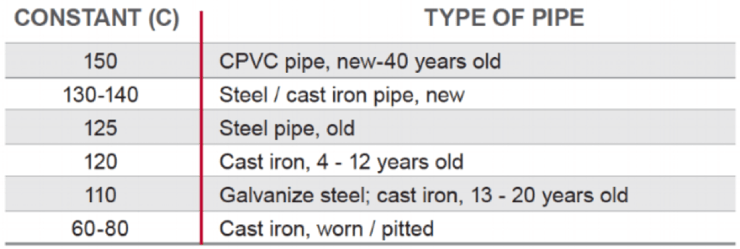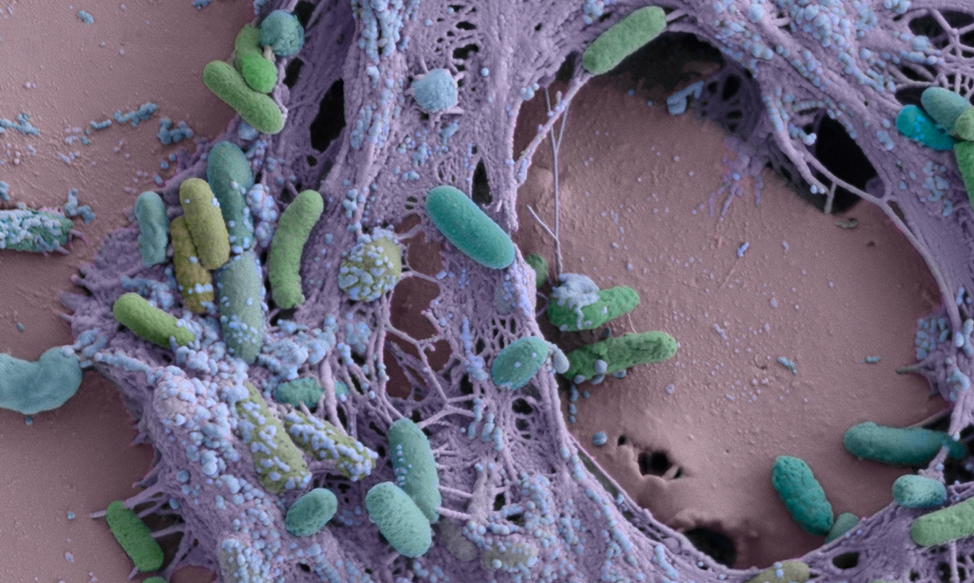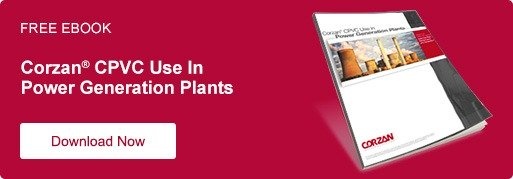CPVC is a Top Achiever in Antimicrobial Performance
Water presents the ideal environment for bacterial microbe development. Harmless microbials occur naturally in water and most are completely safe.
Bacterial microbe growth in pipes, however, can affect water quality and create contamination problems. As microbes grow, they attach to the wetted surfaces in the water distribution system and protect themselves from disinfecting agents by forming microbial biofilms.
Biofilm formation adversely affects various instruments, sensors and equipment. The biofilm in piping systems, tanks, heat exchangers and other equipment can disrupt production by reducing heat transfer, increasing pressure drop and corroding metal. It can also contaminate the water and final product, which is why preventing the formation of bacterial microbes and biofilm is essential.
Bacteria in High Purity Water Systems
High purity water – also known as ultrapure or deionized water – must comply with strict bacterial contamination standards set forth by governing bodies in order to meet production goals in industries such as food and beverage, biopharmaceutical, electronics manufacturing, laboratories and power generation. Product water used for injection or as an ingredient in pharmaceutical products, for example, must have United States Pharmacopeia (USP) designation, and water used in food products is generally FDA regulated. Reagent water utilized for analytical purposes must comply with American Society for Testing and Materials (ASTM) standards.
Nutrients that feed bacteria can accumulate on the hard and rough surfaces of water piping systems. Defects such as connection points, welds and fittings can also contribute to bacterial contamination.
Industrial facilities often tackle bacteria growth and biofilms by replacing or rerouting piping and heat tracing. Intensive disinfection may be required, although disinfection involves taking the piping system out of service until the process is complete.
Biofilms have shown resistance to treatments such as disinfection, with their complex architecture and ability to adapt to environmental conditions making them difficult to remove. Lost productivity and ongoing costs to clean and replace equipment have made biofilm prevention a serious challenge across many industries.
Piping System Characteristics To Prevent Bacteria Formation
Identifying and treating bacteria and biofilms is particularly difficult once a piping system is in place and operational, which is why it is essential to take steps to prevent bacteria and biofilm formation during piping system design. Designers and engineers should consider piping material alternatives based on the following factors:
Material Smoothness
The microorganisms in biofilm must be able to attach to something in order to grow – especially if the water is not completely stagnant. Piping systems with smooth inner surfaces, such as Corzan® CPVC, minimize friction pressure loss from the beginning – and friction pressure loss does not increase as the system ages.
The Hazen Williams C-Factor is the accepted method to calculate friction head loss in piping systems. The higher the C-Factor, the smoother the material’s surface. CPVC has a C-Factor of 150 at installation and the number typically remains constant throughout the piping system’s life. Steel piping begins with a C-Factor of approximately 130 to 140 but can decrease over time as a result of corrosion, scaling and other processes.

Surface Consistency
Piping materials’ surface consistency helps determine the material’s resistance to bacteria and biofilm formation. The images below show the surface consistency of CPVC piping versus stainless steel piping, with the smoother CPVC surface less conducive to biofilm growth.
CPVC Piping Surface

Stainless Steel Piping Surface

Corrosion Resistance
Many industrial processes involve highly acidic ingredients, water or other substances that create corrosion risks for piping. Iron-oxidizing bacteria, sulfate-reducing bacteria and acid-producing bacteria are examples of common corrosion concerns in various industries. These chemicals can result in corrosion over time and provide biofilm more rough areas to grow on piping surfaces.
Designers/engineers should verify the compatibility between the piping material and the chemicals in the process to avoid interior corrosion and increase piping system service life. As an engineered thermoplastic, CPVC resists most acids, bases and salts to decrease the likelihood of corrosion when used with various chemicals. The Corzan CPVC Chemical Resistant Chart shows how Corzan CPVC tested against 400+ chemicals.
Plasticizers as Additives
The risk of biofilm formation increases with plasticized piping materials because some microorganisms use plasticizers as a nutrient source. CPVC is not plasticized and does not pose a risk for biofilm formation.
Selecting the Right Piping System
Corzan CPVC is one of the only piping materials ideally suited to resist biofilm growth, offering advantages such as material smoothness, surface consistency and corrosion resistance. In addition, the material does not include plasticizers.
Contact a Corzan CPVC piping system expert or one of our partner manufacturers for engineering support or to schedule a free technical consultation.
Details for this blog were taken in part from the following:
/blog/how-proper-piping-material-selection-can-reduce-harmful-biofilm-formation
https://www.corzanplumbing.com/en-pk/blog/how-corzan-cpvc-prevents-microbial-water-contamination


